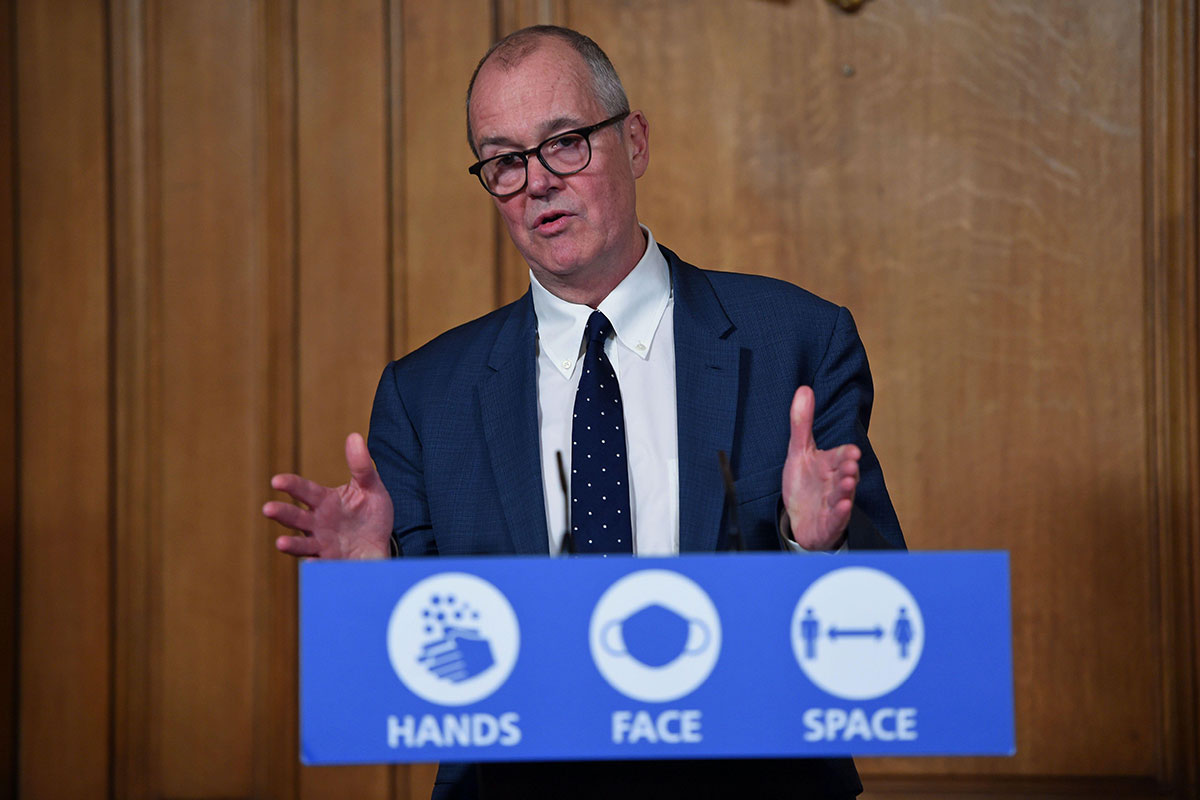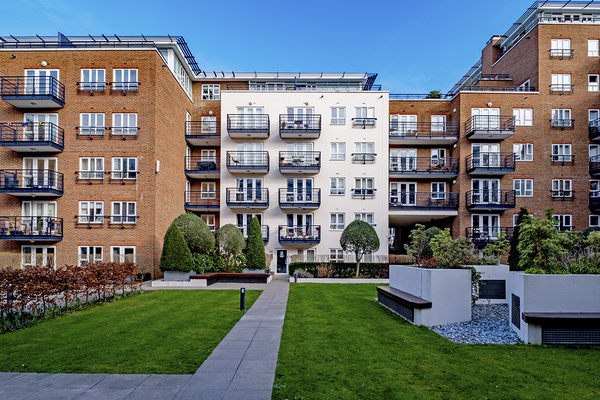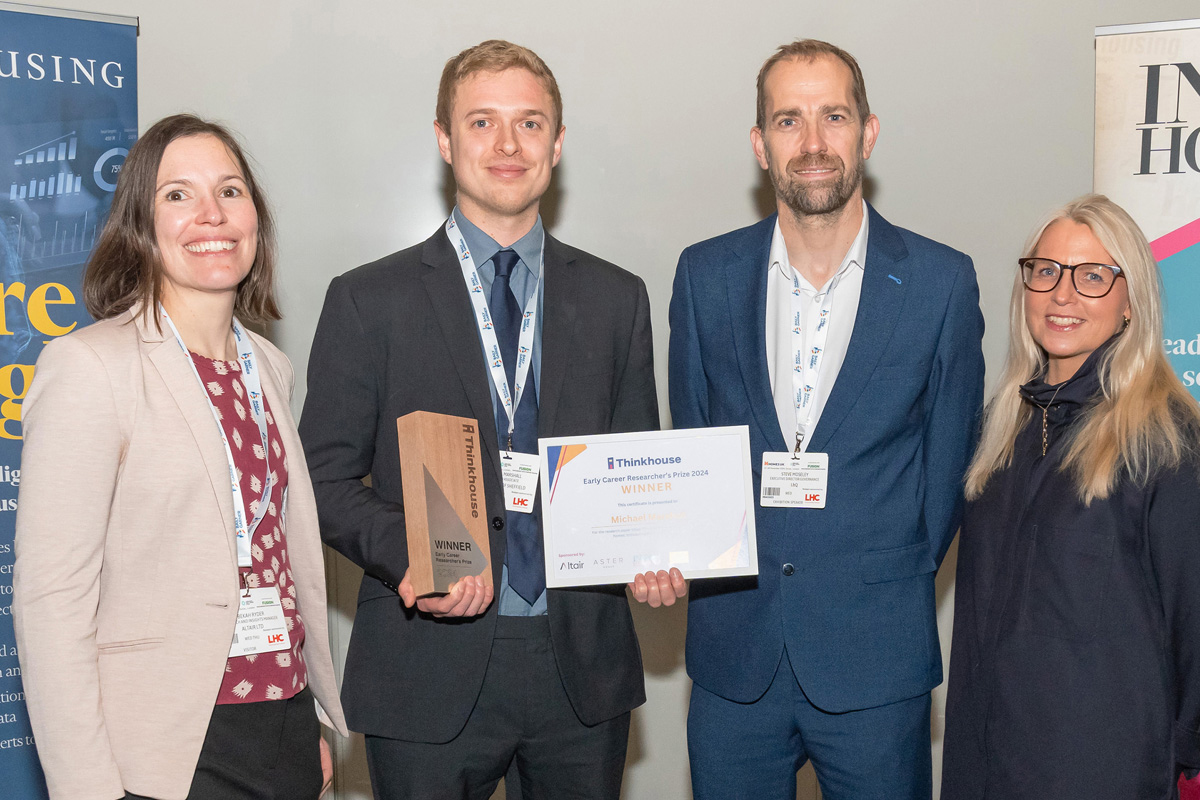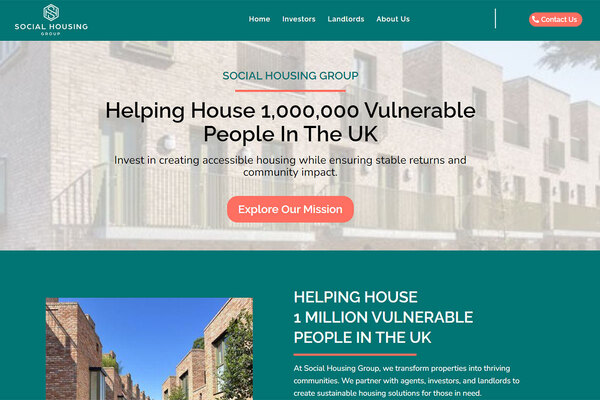CPD module: the importance of indoor air quality
What is indoor air quality, why is it important, and how can it be improved in social housing? Professor Tim Sharpe, head of the department of architecture at the University of Strathclyde, explains.
Read this article, in association with safety device specialist Aico, take the quiz at the end, earn CPD minutes.
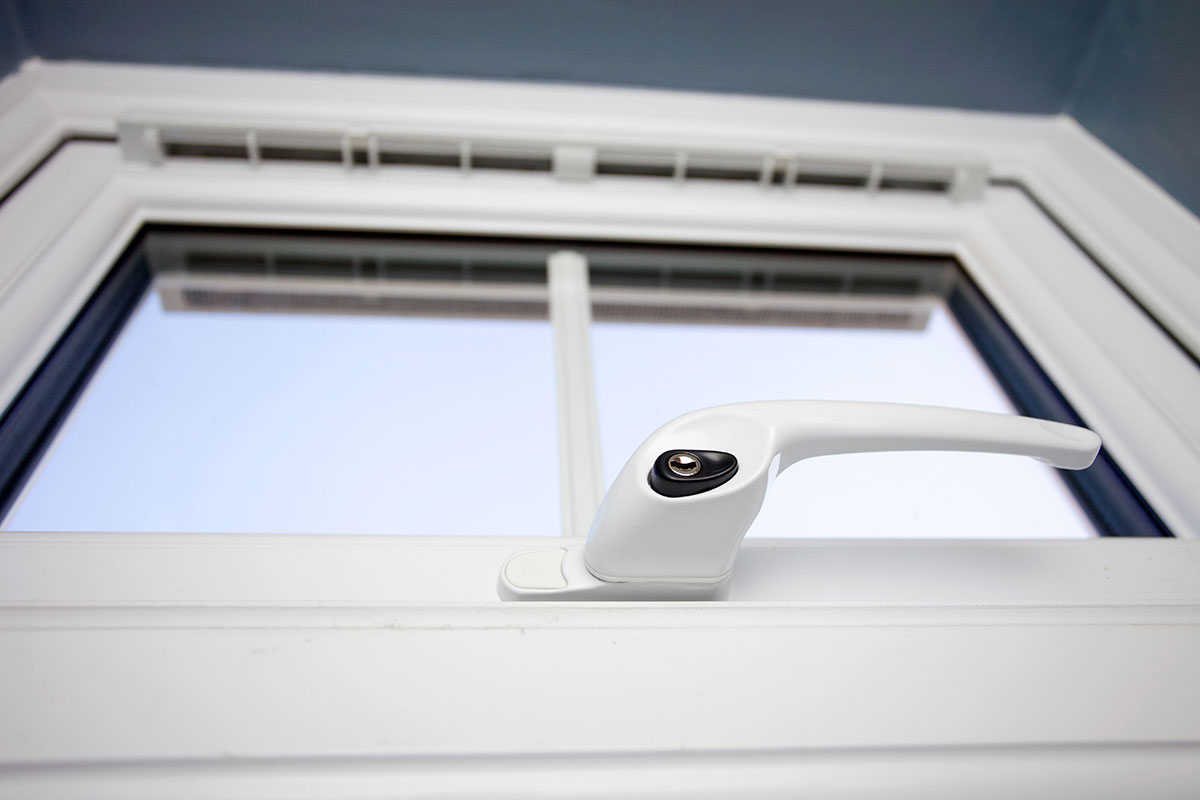
In association with


Learning outcomes
After reading this article, learners will be able to:
- Understand what indoor air quality is and why it is important
- Detail the factors that contribute to indoor air quality
- Explain what constitutes good indoor air quality, with reference to specific measures and figures
- Describe how good indoor air quality can be achieved
- Describe how indoor air quality can be improved
- Detail what is known and what is not known about air quality in the UK, both generally and in its buildings specifically
- Name some ways the monitoring of indoor air quality might be improved
- Talk through the potential obstacles to improving the monitoring of indoor air quality in the UK. Give some ideas on how these obstacles might be overcome
Good indoor air quality is important to a safe and suitable home. If temperature, moisture and/or pollution reach inappropriate levels, there can be consequences for health and the environment becomes uncomfortable.
This means it is an important area for social landlords to consider. This article explores what constitutes good indoor air quality and how it can be achieved. It considers the importance of appropriate ventilation and possible options for the monitoring of indoor air quality. Read the article, take the quiz and earn CPD minutes.
How is indoor air quality defined? Which factors influence it?
At the simplest level, indoor air quality (IAQ) means the quality of the air within and around buildings. Its impact is significant, as poor IAQ affects the health and comfort of those within a building.
The elements of IAQ
- Temperature Very high or very low temperatures are clearly harmful to human health. More generally, a poorly controlled temperature can make an environment uncomfortable.
- Moisture High moisture levels are associated with the development of damp and mould, both of which can cause or exacerbate ill health. At the other end of the scale, very dry air is also not conducive to well-being. It can cause problems with the skin and with breathing.
- Pollution While the threat of outdoor pollution has rightly received growing attention over many years, the significant issue with pollution in buildings is not always recognised. Materials used to construct buildings, furniture, and cleaning and personal care products are all known to contain pollutants. Very small particles generated by cooking and open flames can also be absorbed into the lungs. In addition, there is the issue of microplastics – tiny particles which break away from bigger pieces of plastic, or which are intentionally used within products.
The problem of indoor pollutants has grown hugely in scale. In the 1900s, there were around 50 chemicals that might be found inside a building; today there are in the region of 55,000.
The vast majority of those will be benign, but some are known to be harmful: carcinogens (substances that can cause cancer), for instance, or can disrupt the body’s endocrine system.
The COVID-19 pandemic has also powerfully highlighted how indoor air quality can affect health. Airborne viruses such as COVID-19 spread more easily in spaces with poor air quality and lacking ventilation.
What constitutes good indoor air quality?
- Appropriate moisture levels Ideally, indoor humidity should always be kept between 40% and 60% throughout a building.
- Controlled temperatures There is no one ideal temperature for every part of a building, particularly when it is a residential building. How warm it should be will depend on factors including the age and overall health of the inhabitants (temperature extremes have the greatest effect on the young and old, and those with certain pre-existing health conditions) and the room in question (it is best for bedrooms to be slightly cooler as this generally improves sleep). It is worth noting that humidity also affects temperature: in cold weather, high humidity makes air feel colder; in hot weather, it makes it feel hotter. With all that said, the general consensus is that, in the UK, indoor temperatures should ideally not fall below 18°C or climb above 21°C.
How can good indoor air quality be achieved?
There are two strategies key to achieving good indoor air quality:
- Controlling the level of pollutants Careful choice of the materials and products used in a home can stop pollutants from getting into the air in the first place.
- Ventilation This helps remove any pollutants that are present, and to regulate temperature and humidity levels.
In recent years, there has rightly been a focus on energy efficiency, and on delivering high ratings on Energy Performance Certificates.
Part of this is ensuring homes do not lose heat when it is generated, by focusing on the likes of insulation and airtightness.
Making buildings airtight is perfectly reasonable and sensible, but the standards for ventilation have not kept pace with the standards for energy efficiency. This means that many modern homes have poor ventilation, and as such are likely to have much poorer indoor air quality.
Older homes can also be poorly ventilated, but have the additional potential problem of poor insulation. This may make residents reluctant to open windows due to a keenness to keep any heat in the home.
COVID-19, indoor air quality and England’s building regulations
Given COVID-19 is spread by airborne particles and droplets, the pandemic starkly highlighted the extent to which many UK buildings have insufficient ventilation.
All airborne infections spread more quickly in indoor environments with limited access to fresh air.
In 2021, the government’s chief scientific advisor Sir Patrick Vallance (above) commissioned an exploration of the “health and sustainability of our indoor environment”.
The Royal Academy of Engineering, together with the Chartered Institution of Building Services Engineers (CIBSE) and other partners to the National Engineering Policy Centre (NEPC), were charged with identifying interventions which could reduce infection transmission
in the UK’s built environment. The resulting report was published in June 2022. It recommended new regulations and standards to ensure that people can have confidence “that the air in the buildings they use is safe to breathe, just as they would expect the water to be safe to drink”.
Changes to England’s building regulations – partly to support the Future Homes Standard, which aims to cut the carbon emissions of new builds – do touch on ventilation and indoor air quality. But the report argued for a need to create “a culture shift toward embedding considerations of health and well-being in the built environment”.
It suggested a new part of the building regulations should be established, specifically focused on health and well-being. This should have “an explicit functional requirement that the building should provide an adequate indoor environment that protects the health and well-being of persons using the building from adverse effects”.
The report further suggested there was a need to increase public awareness of the importance of ventilation and indoor air quality.
The government did pledge to tackle aspects of indoor air quality in its clean air strategy, published in 2019. This included a promise to improve consumer awareness, as well as commitments to prohibit the sale of the most polluting fuels and stoves.
How good is indoor air quality in the UK?
This is difficult to assess. Outdoor air quality is widely measured. It is possible to map the UK from the perspective of air outdoors – even linking it to health and population data, to identify connections between things like traffic pollution and well-being. Indoor air quality, in contrast, is not routinely measured. Once residential properties are completed, there tends to be little continuing assessment of IAQ. This means there remains a gap in our air quality knowledge of buildings.
With that said, there have been examples of poor IAQ in social housing. Most notable is the death of two-year-old Awaab Ishak, who died in December 2020 from a respiratory condition which the coroner concluded was caused by prolonged exposure to mould. She added that the mould was the result of “normal daily living activities” and a lack of effective ventilation in the home.
It is notable that damp and mould is an increasingly common theme of complaints made to the Housing Ombudsman Service. In 2020-21, there were 1,993 enquiries and complaints made about damp, mould and leaks. In 2021-22, there was a 77% increase in the amount of concerns raised, to 3,530. The figure increased further still in 2022-23. This is one indication that there are many households with poor IAQ.
Could indoor air quality be better monitored?
Temperature and humidity can both be easily measured. There is no one clear method for measuring ventilation, but one important proxy measure is carbon dioxide (CO₂) levels. Since humans create CO₂ when they breathe out, measuring levels of this gas is a helpful way of assessing the amount of fresh air in a space. It is recommended that buildings should have an indoor CO₂ level of below 1,000 parts per million. This equates to
a fresh air rate of eight litres per second per person.
The technology to measure IAQ has advanced in recent years. Nowadays small, unobtrusive devices can effectively monitor temperature, humidity and carbon dioxide levels in homes. They can also be internet-connected. This means data can be regularly collected with ease, across a number of properties.
For individual residents, this can help in building an understanding of the performance of their homes. For social landlords, such data enables a more sophisticated understanding of stock. It should make it possible to intervene earlier when problems emerge, and to more reliably prioritise resources for asset management work.
What are the complications in improving the monitoring of indoor air quality?
Quite simply, getting monitors into buildings. If the relationship between a tenant and their social landlord is not grounded in trust, a resident may feel suspicious about such devices being installed. Some will fear that they are being spied on.
A related point is that landlords must have the right intentions in using such devices. This is not, for instance, about making it easier to counteract dampness claims. It is about giving comprehensive data which enables landlords to improve indoor air quality and indeed to prevent problems from occurring in the first place. This then improves the comfort and quality of residents’ homes.
Building regulations could make a difference to the ease with which such technology can be installed. In Scotland, for instance, it is now a requirement that all bedrooms of all new houses have CO₂ monitors in place.
Where a home has poor indoor air quality, what can be done to improve it?
- Ensure basic ventilation is in place and is working correctly. This includes extractor fans in rooms likely to be affected by steam (most notably kitchens and bathrooms), and trickle vents in windows (designed to allow a ‘trickle’ of constant air flow), important in modern airtight homes.
- Explore whether existing ventilation measures need improving. In kitchens, the majority of cooker hoods do not actually extract to the outside. Instead, they recirculate air – this is fine for catching smells but does not address particulates and other pollutants.
- Explore additional ventilation measures. Mechanical ventilation with heat recovery (MVHR) systems, for instance, extract damp air and draw in air from outside. The air being drawn in is heated using the warmth of the air being extracted, which can increase energy efficiency and reduce energy bills.
- Consider the positioning of heating sources. In many modern homes, radiators are placed on the inside wall next to the door and with a window on the opposite wall. That is typically because it is the cheapest option, requiring less piping. The problem is that it leads to a big thermal gradient across a room: air coming in drops to the floor, feeling like a draught and leading to a desire to close any sources of outside air. Warm moist air then sits inside the room and hits the window, where it cools and condenses, so leading to damp. Instead, radiators are best placed in the coldest part of the room.
Crucially, offer advice and support to residents. Any means of ventilation is only helpful if a resident knows how best to use it, so it is important to offer advice here. This might be as simple as talking through why extractor fans should be left on for a period of time after a shower, even if the noise is irritating. It could involve advising on how to dry clothes indoors in a way that minimises the risk of excess moisture in the air, by closing the door to the room in which the clothes are drying, opening the window slightly, and having the heating on for a limited period of time. If any new or uncommon ventilation system is in place, advice must be given on how to use it effectively. Many people have no idea they have an MVHR system, for instance, and simply assume it is a fan – and so turn it off if the noise bothers them. Note all advice must come from a place of wanting to help rather than blame an individual resident. Landlords have too often attributed problems with indoor air quality to residents’ ‘lifestyle choices’. Such decisions are, in fact, rarely a free choice – in a property with no outdoor space, the only option is to dry clothes indoors, for instance.
Where should social landlords begin if there is a desire to improve indoor air quality across stock?
The most valuable initial step may just be increasing internal knowledge of building physics in the likes of asset management teams.
This sounds complicated, but really just encompasses understanding how a home should work overall – how it should be ventilated; where heating sources should ideally be positioned; understanding the ventilation and heating arrangements in homes; and ensuring an organisation has a reliable record of how such systems are being maintained.
There is often a focus on single elements – for example, new windows or insulation – but the home works as a whole system and needs to be considered as such.
In the longer run, landlords might consider using monitoring devices in homes. This could support a more proactive approach to identifying homes in which IAQ is poor, and a greater ability to address issues.
Where interventions involve the installation of new equipment, it is critical that systems are properly conceived, designed, installed, commissioned and maintained. Helping occupants develop a full understanding of how best to use the system is also vital.
Areas to reflect on
- How well does your organisation currently understand the air quality inside its stock? Do you think improvements are needed? How might those most effectively be made?
- How well does your organisation currently communicate with residents about IAQ? What might strengthen partnerships between the organisation and its customers on this issue?
- What one point in this piece do you want to share with colleagues who may not have read it? How will you share it?
Summary
Indoor air quality influences the health, well-being and comfort of a home’s occupants. There are multiple factors which determine IAQ, but most notable are temperature, humidity and air flow.
If social landlords are to deliver the best possible homes to residents, it is important that these factors are considered.
Technology could potentially help here, although a strong relationship between both the social landlord and tenant is needed for it to make a full contribution. Importantly, social landlords need to commit to developing an understanding of IAQ.
References and further reading
- Inside Housing (2023), Social landlords should make indoor air quality a health responsibility, researcher says
- Stockholm Environment Institute (2024), What you need to know about indoor air quality and social housing in the UK
- UK Health Security Agency (2023), How to improve air quality in your home while making it more energy efficient
Inside Housing CPD content archive
Find out more about Inside Housing’s CPD offering by clicking here
Fostering data-driven engagement with residents on fuel poverty
Watch the full webinar at the end of this article in association with Switchee, Fostering data-driven engagement with residents on fuel poverty
How have fire safety regulations changed and how can providers remain compliant?
Recent legislation aims to improve fire safety in buildings by increasing accountability and improving fire risk assessments. Andy Frankum, chair of the National Social Housing Fire Strategy Group, explains more
Tenancy fraud – how to spot it and how to fight it
Stephanie Toghill of Islington Council and vice-chair of the Tenancy Fraud Forum explains what tenancy fraud is, how it occurs and how to tackle it
How landlords should deal with TSMs, one year on
Tenant satisfaction measures were brought in by the regulator last year and assess whether landlords are providing quality homes and services to tenants. Tim Quinlan at Riverside explains how it has adjusted to the changes
The importance of good quality data to good air quality
Watch the full webinar, The importance of good quality data to good air quality
Making data-led decisions in social housing
How data is stored and used is crucial for decision-making across the social housing sector. Dr Laura Wales, head of data at Raven Housing Trust, explains why
Building reciprocal relationships with residents
Reciprocity is essential for social landlords to build successful relationships with residents. Anna de Souza and Ingrid Smith at Peabody explain how to go about it
How can social landlords assess whether retrofit is delivering intended performance improvements?
Watch the full webinar, How can social landlords assess whether retrofit is delivering intended performance improvements?
How social landlords should assess and report performance on ESG
Social landlords are increasingly expected not only to consider their environmental and social impact, but also to demonstrate it. Andy Smith, head of impact services at The Good Economy, outlines what providers need to consider
Designing new builds with indoor air quality in mind
Could the drive for energy efficiency in new builds be at the expense of indoor air quality? Dr Jenny Brierley, former housing association chief executive and indoor air quality researcher, explains
AI and robotic process automation – how to use them in social housing
Artificial intelligence and robotic process automation could transform the way social landlords operate and create efficiencies. Monica Quintero, head of digital at Stockport Homes Group, explains the benefits and pitfalls
How to approach decarbonisation policy and strategies
The policy environment on decarbonisation and retrofit is evolving, so how can social landlords continue to build strategies to meet net zero? Richard Ellis, director of sustainability at Peabody, explains
Addressing the development gap in social housing
There is a significant gap between the social housing available in the UK and the number of people who need it. Vicky Savage, executive group director for development and sales at L&Q, looks at the ways in which social landlords can support and increase further development
The importance of indoor air quality
What is indoor air quality, why is it important, and how can it be improved in social housing? Professor Tim Sharpe, head of the department of architecture at the University of Strathclyde, explains
The Procurement Act 2023 – how will it affect landlords?
The Procurement Act 2023 passed into law at the end of last year, with full implementation set for October 2024. How does it change procurement processes, what stays the same and how should social landlords adapt? John Wallace, director of procurement at Clarion, explains all
Funding options in social housing
What does the current finance environment look like in the social housing sector, and what are the different options? Arun Poobalasingam, funding and marketing director at affordable housing aggregator The Housing Finance Corporation, explains more
The new building safety regime
Why has the new building safety regime been introduced, what is different, and what do social landlords need to do to ensure compliance? Andrew Moore, head of operations for building control and planning service at the Building Safety Regulator, explains
The recruitment and retention challenge in repairs and maintenance
The social housing sector faces a challenge in recruiting and retaining repairs and maintenance staff. Mark Coogan, Liz O’Connor, Paul Longman, Russell Thompson and Mike Wilson explore the causes and some potential solutions
Co-production
What is co-production, how can it be fostered, and what are the potential benefits of getting it right? Learn how the concept can be applied successfully to social housing
Psychologically informed environments
How psychologically informed environments take into account how previous trauma might impact people who have experienced homelessness and how they interact with support services
Understanding damp and mould
Housing ombudsman Richard Blakeway discusses how social landlords can tackle the problem of damp and mould in their homes
Tenant satisfaction measures
Watch the full webinar How to collect, report and act on tenant satisfaction measures
